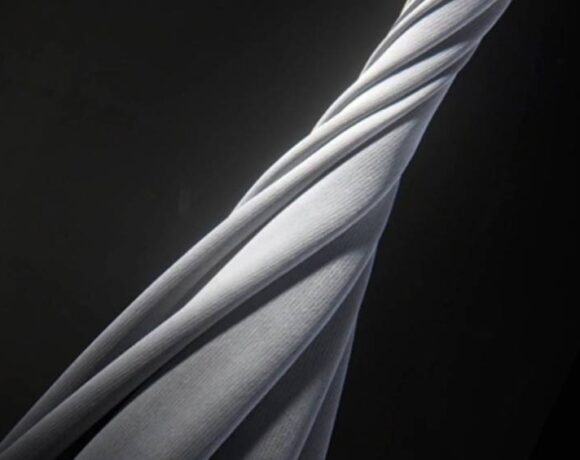Aramina: A Better Substitute For Jute Fibres

Aramina are long fibres obtained from the stems of the mallow plant, Urena Lobata, which is native to Brazil. Aramina fibres are used for cords, twine and burlap fabrics. This invasive plant was classified as a noxious weed in the U.S. in 1999. A bast fibre belonging to the botanical family Malvaceae, a common, perennial grass growing in tropical and subtropical areas like Brazil, India, Madagascar and Africa. It is harvested when in full bloom (pink flowers). The fibre is creamy white, lustrous, soft and flexible, comparable to jute.
Since Kenya imports most of the vegetable fibres, apart from cotton and sisal, there is need for research in the development and utilisation of other vegetable fibre sources. This study, however, was aimed at analysis the quality of Aramina fibres from the plant Urena Lobata that grows widely and as a weed in Kenya.
Production Of Aramina Fibres
Urena Lobata fibre is produced by natural water retting. The fibre is extracted by the retting process. Then the carding, spinning and dyeing process can be carried out. The process of extraction of Aramina fibre is similar to extraction of jute fibre. Therefore, the process of jute fibre extraction is adapted in which the barks are stripped off from the wooden portion and subjected to partial retting by immersion in water. The process takes two (2) weeks and about 2.6 kg of fibres can be obtained from 22 kg of unretted green bark. The unretted bark contain impurities and moisture hence it is much heavier than the dry fibres.
Properties Of Aramina Fibres
In its wild state, the Urena lobata plant grows 3 to 7 feet high and when cultivated it can grow as tall as 13 feet. The fibre strands are cream coloured and have a wonderful lustre. This fibre is mainly grown in the Congo area although small amounts are also raised in Brazil, India and the Phillipines. Urena has the same uses as jute.
The fibre has a staple length of 13.5 cm and burning characteristics like those of other natural cellulose fibres such as cotton and linen. The fibre has a moisture regain value of 9.7%, 42.9% stronger when wet than dry. The percentage elongation was recorded at 1.035% when dry and 1.3% when wet. The wetness of the fibre has significant effect on the elongation as well as on fibre strength (tenacity) which was found to be 2.0 g/d for the wet fibres, while that of the dry fibres it was found to be 1.4%%g/d similar to Jute
Chemically, the fibre is affected by acids and this implies that the fibre cannot be dyed using dyestuffs that are acidic or stored in acidic solvents. This property is important in the formation of oxycellulose used in the manufacture of regenerated fibres. The fibre is found to be resilient and pliable. This quality make it possible to be spun into yarn, which is later dyed and made into articles.
Applications Of Aramina Fibres
Aramina fibres are used for cords, twines and burlap fabrics, while evaluation for use in pulp and paper is under progress. It can be used in cordage and course textiles.
Various methods used to make the articles include crocheting, plaiting, hand weaving, card weaving and macramé knots. The articles made include shoulder bag, tablemat, floor mat, belt, plant hanger and toothpick holder cover. In short, the fibre was found to qualify as a textile fibre and can be recommended for usage in the textile industry, both at large and small scale. Since it is locally available in Kenya and is also cheap to obtain and of good spinning and dyeing quality, it can be of great use in the “Jua Kali” sector.
Aramina can be used as composite reinforcements also. The reinforcements of composites with natural fibres have attracted more concern than their synthetic counterparts due to the biodegradability, less expensiveness, CO2 neutrality, ready availability, non-abrasiveness, low weight, renewability and high specific mechanical properties of these fibres. However, the hydrophilicity, reduced interfacial bond and reduced thermal strength of fibres of natural origin deter their use in composites reinforced with natural fibres.















